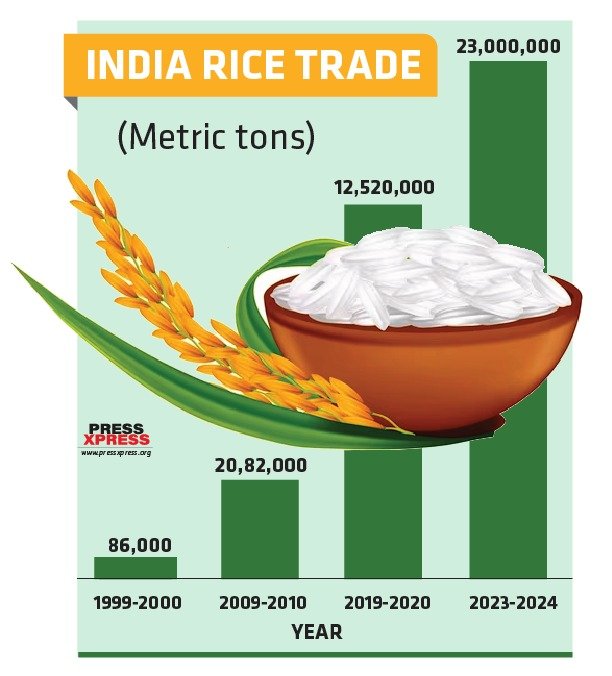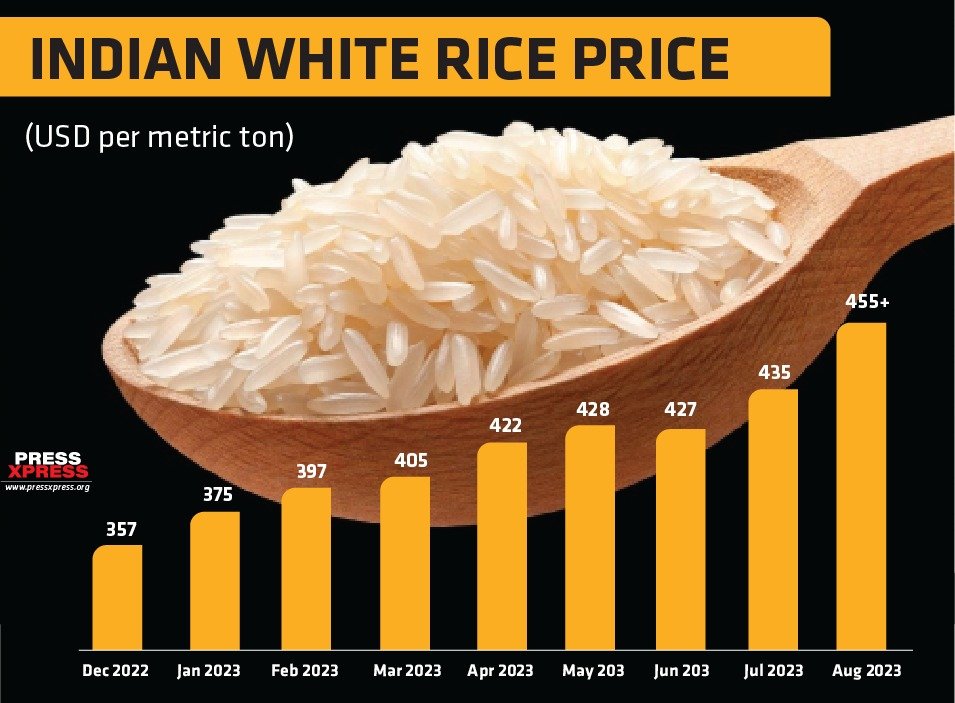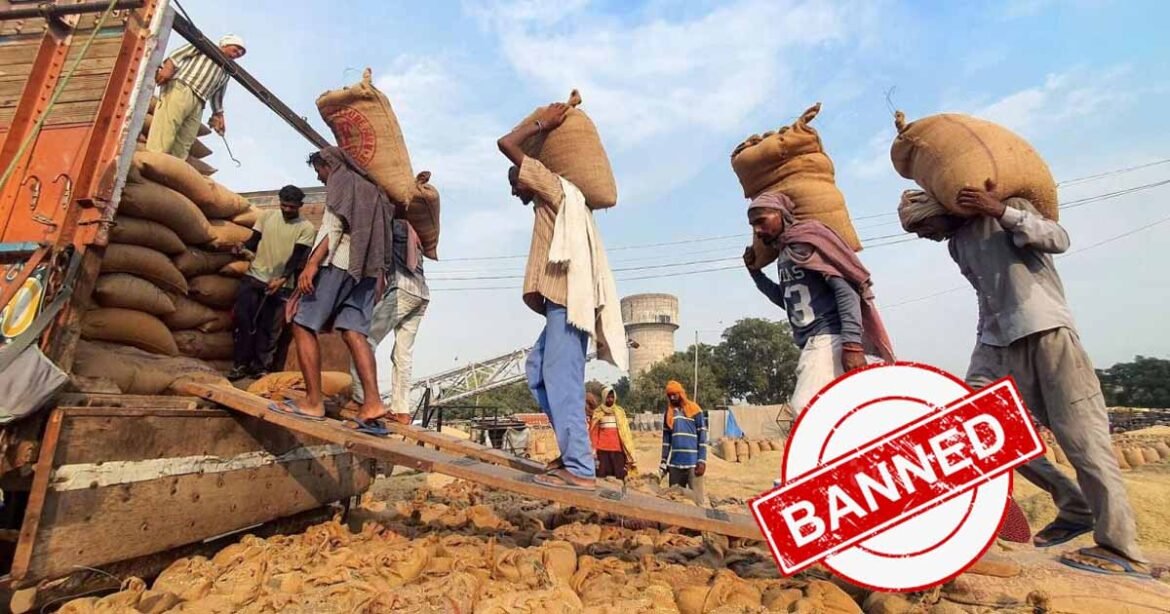On July 20, 2023, India made a significant announcement to address the surge in domestic rice prices, which had risen by over 30% since October 2022. The Indian government declared that it would impose restrictions on the export of non-basmati rice, effective immediately. This move is estimated to cover approximately 75%-80% of Indian rice exports.
The restriction comes as a blow to the global rice market, which has already experienced a 15%-20% increase in prices since September 2022. This spike in prices occurred following a period of relative stability earlier that year, amidst soaring prices of other cereals due to the Russia-Ukraine war. Notably, India has emerged as the world’s leading rice exporter over the past 15 years, accounting for an impressive 40% of global rice exports in the 2022/23 season. Consequently, any actions taken by India in this sector have significant implications for the entire global market.
This is not the first time India has implemented export restrictions on rice. In 2022, India had banned the export of broken rice and imposed a 20% tariff on non-basmati rice exports. Despite these restrictions, India’s rice exports still reached a record high of 22.3 million metric tons in the calendar year 2022. However, the latest ban is likely to lead to a decline in these numbers, potentially resulting in higher global rice prices and heightened food insecurity concerns.
This new trade restriction poses a threat to an already vulnerable global rice market. Experts said that a strengthening El Niño could potentially reduce rice production in South and Southeast Asian regions. While current crop forecasts assume normal weather patterns and project normal yields, a delayed or truncated monsoon during the summer could result in reduced rice yields and increased demand for imports. This situation would coincide with India, the world’s largest exporter, restricting rice supplies to the rest of the world.
From self-sufficiency to export dominance
Over the last decade, India has experienced a remarkable transformation in its rice trade dynamics. Historically, India faced challenges in rice production, leading to a reliance on rice imports during the 1960s and early 1970s. However, by the late 1970s, India made significant strides towards achieving self-sufficiency in rice production. By the early 2000s, the country had not only achieved self-sufficiency but had also become a net rice exporter.
The growth in rice production in India has been particularly noteworthy in recent years. Since 2010, there has been an impressive 40% increase in rice production, equating to over 40 million tons of additional output. This has elevated India to the position of the world’s second-largest rice producer, trailing only behind China, which produced approximately 146 million tons of rice during the same period. It is important to note that China’s rice exports are significantly lower than India’s.

Since the 2010s, India’s rice exports have experienced a substantial upswing. Over the mentioned period, India’s rice exports have surged by 20 million tons. This substantial increase in exports has propelled India to become the largest global rice exporter, a position it has held since the 2014/15 period. On average, India’s share in the global rice market has exceeded 40% during the last four years.
In various Asian countries, rice constitutes a significant share of total calorie intake per day. According to data from the UN Food and Agriculture Organszation, some of the top rice-consuming nations in Asia, such as Bangladesh, Bhutan, Cambodia, Indonesia, Myanmar, Nepal, Thailand, the Philippines, and Sri Lanka, have rice contributing to 40% to 67% of their daily calorie intake. The significance of rice as a staple food in these countries underscores its vital role in ensuring food security and meeting the nutritional needs of their populations.
Interestingly, several of these Asian countries, including Bangladesh, Bhutan, China, Sri Lanka, and Nepal, depend on imports from India to meet a significant portion of their rice consumption. India’s role as a major rice exporter plays a crucial part in ensuring a stable food supply in these neighboring countries, reinforcing the interdependence in the region’s food trade.
Even beyond Asia, many countries across the globe import rice to meet their domestic demand. This emphasizes the global importance of rice trade in bridging the gap between production and consumption regions. Rice’s status as a widely traded commodity demonstrates its significance in addressing food security concerns on an international scale.
Rice market of India around the world
Several countries are prominent buyers of rice, with China, the Philippines, and Nigeria being among the largest importers. Additionally, there are “swing buyers” such as Indonesia and Bangladesh, which increase their rice imports during periods of domestic supply shortages. In Africa, the consumption of rice is steadily increasing.
Countries like Cuba and Panama heavily rely on rice as their primary source of energy. Last year, India managed to export a substantial amount of rice, approximately 22 million tonnes, to 140 countries. Within this export volume, around six million tonnes consisted of the relatively cheaper Indica white rice. Indica white rice dominates about 70% of the global rice trade, and India has currently suspended its export of this variety. This ban follows the previous year’s restriction on exports of broken rice and the imposition of a 20% duty on non-basmati rice exports.

The sudden export ban has raised concerns about a potential surge in global rice prices. Pierre-Olivier Gourinchas, the chief economist at the International Monetary Fund (IMF), predicts that the ban could lead to a price hike of up to 15% in global grain prices this year.
Shirley Mustafa, a rice market analyst at the United Nations’ Food and Agriculture Organisation (FAO), emphasizes that India’s decision to ban exports has come at an inopportune time. The move has further exacerbated worries about the stability of global rice prices, raising questions about the potential impact on food security and availability in various regions across the world.
Export ban and its ripple effects
India’s latest export ban may not be surprising given its history of imposing export control measures during periods of high global prices. In the past, during the 2007-08 and 2010-11 food price crises, India had banned the export of rice, particularly non-basmati rice, for extended periods. With the disruption in global markets caused by Russia’s invasion of Ukraine in February 2022, India first imposed a ban on wheat exports due to concerns about domestic inflation and rising import demand from other countries. Subsequently, India limited exports of 5% broken rice and imposed a 20% export levy on unmilled and husked rice, both of which are expected to continue through 2023.
The effects of India’s ban on world rice prices will depend on several factors. Firstly, the severity of the export restrictions will play a crucial role.
If India chooses to maintain its current policy of permitting sales of non-basmati rice to neighboring countries, or if the prohibition is merely a temporary measure, the potential repercussions on the market are likely to remain constrained. However, a “hard” ban could significantly affect countries that heavily rely on rice imports from India. Rice is relatively thinly traded in global markets compared to other grains, so a ban affecting 40% of global rice exports would put pressure on other suppliers and rice inventories.
The second factor is the impact of climate conditions, such as the strengthening El Niño and the positive Indian Ocean Dipole, on the summer monsoon season, which could potentially lower rice production in India and other countries in South and Southeast Asia. Normal rice yields would ease the pressure on India to maintain an export ban to meet domestic needs. Conversely, poor rice crops in major exporting countries like India, Thailand, and Vietnam would reduce world market supplies and reinforce the rationale behind the ban.
The third factor is the possibility of India’s actions influencing other rice-exporting countries to impose their own export restrictions. Past experiences have shown that when major rice exporters like India, Vietnam, Thailand, and Pakistan imposed bans in 2007/08, other rice exporters followed suit, leading to spikes in rice prices.
If other countries follow India’s export ban on non-basmati rice and impose their own restrictions, the global market will likely react sharply. As an illustration, Bangladesh heavily relies on rice consumption as a significant source of calorie intake, and it holds a critical position as India’s primary rice trading partner. Consequently, Bangladesh is closely observing India’s trade policies regarding rice exports. Other South Asian neighbours would also be impacted by additional export bans on rice, and export duties on broken and non-basmati rice would exacerbate the situation.


